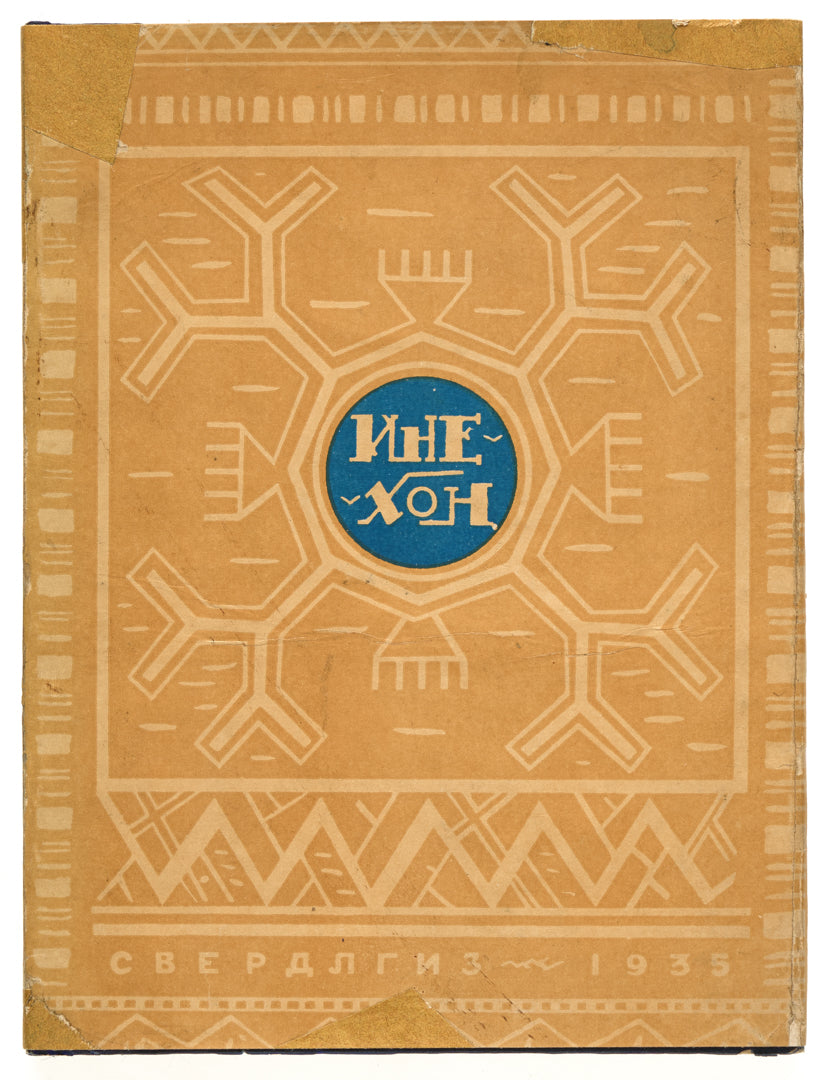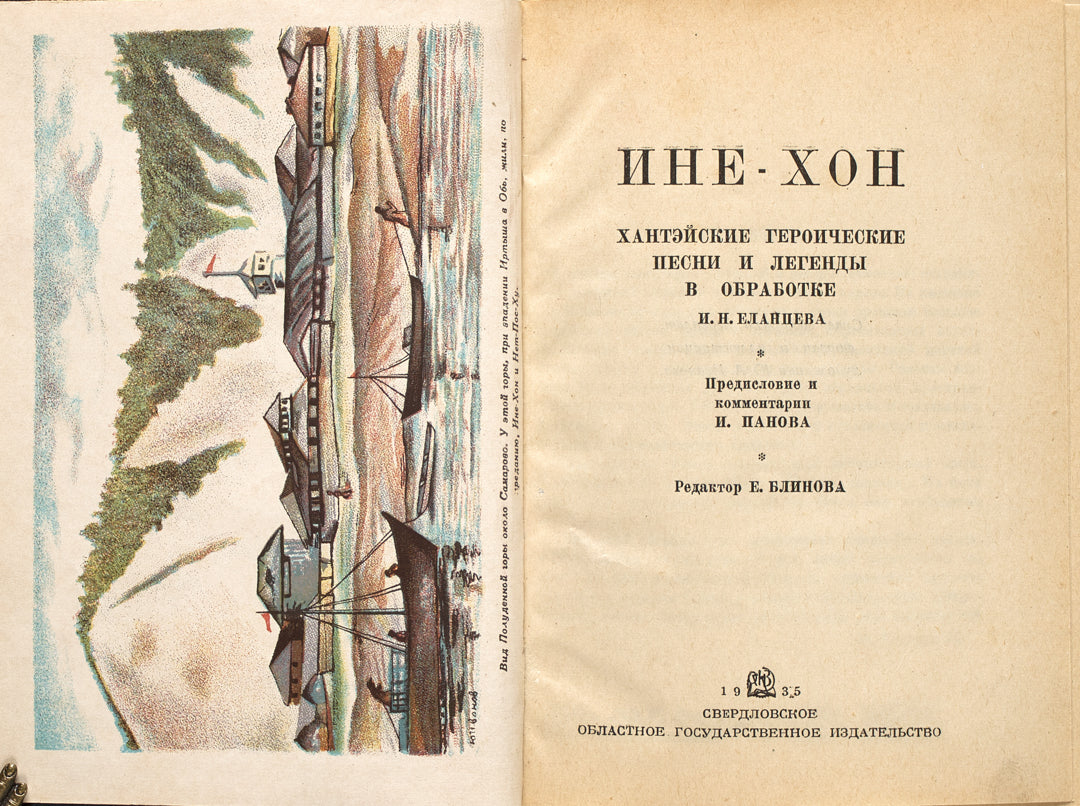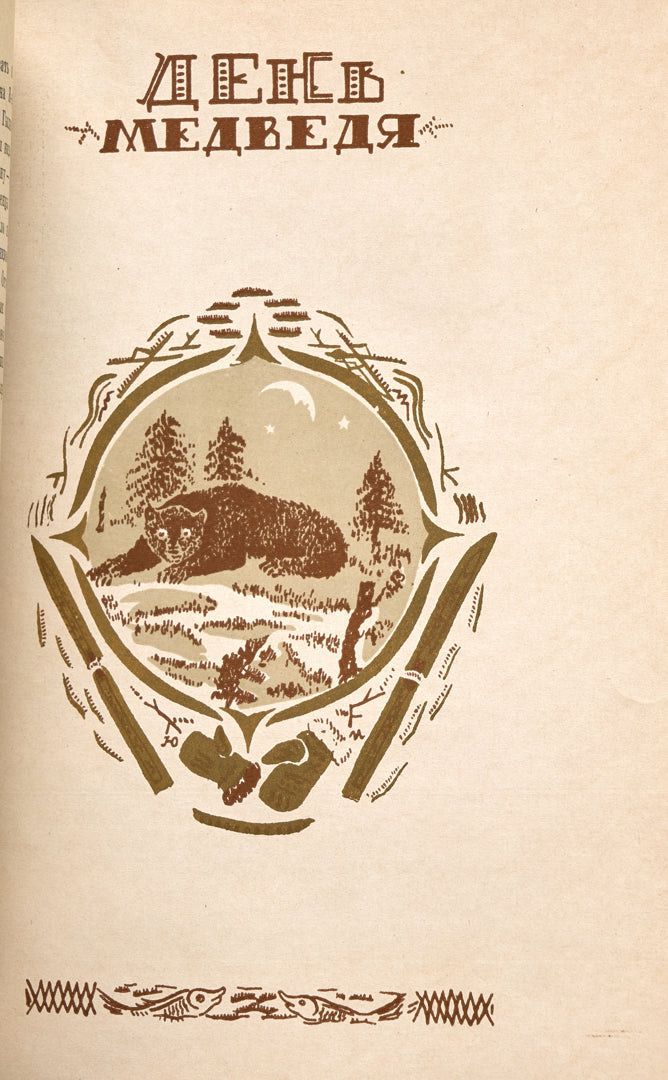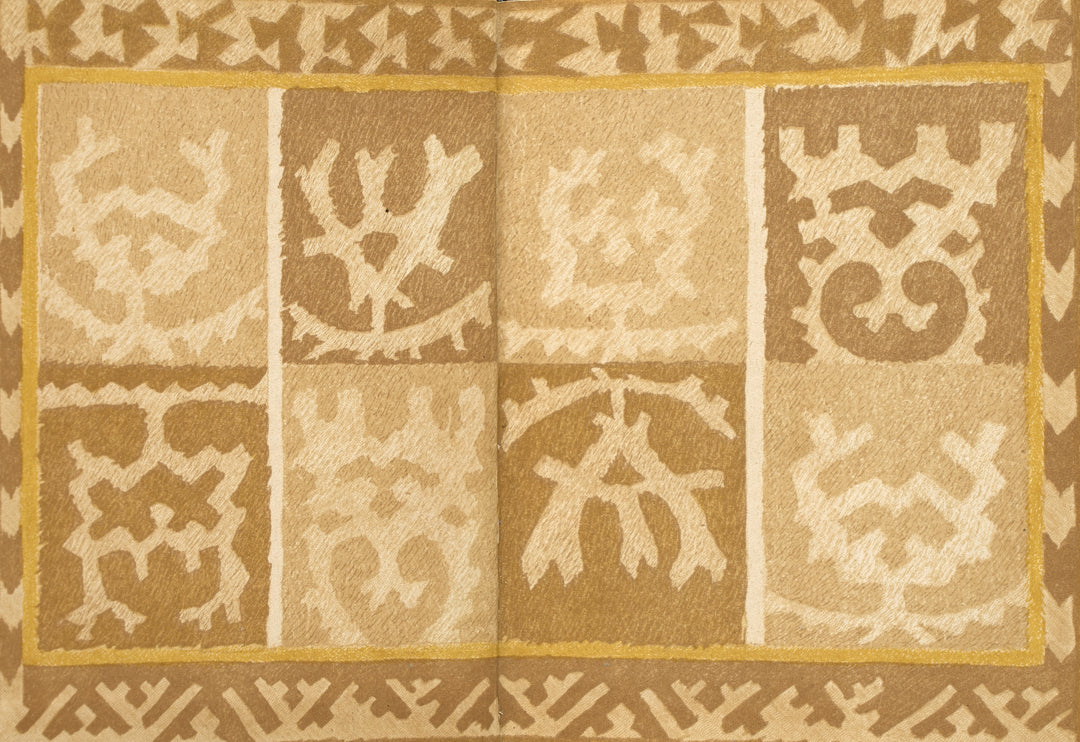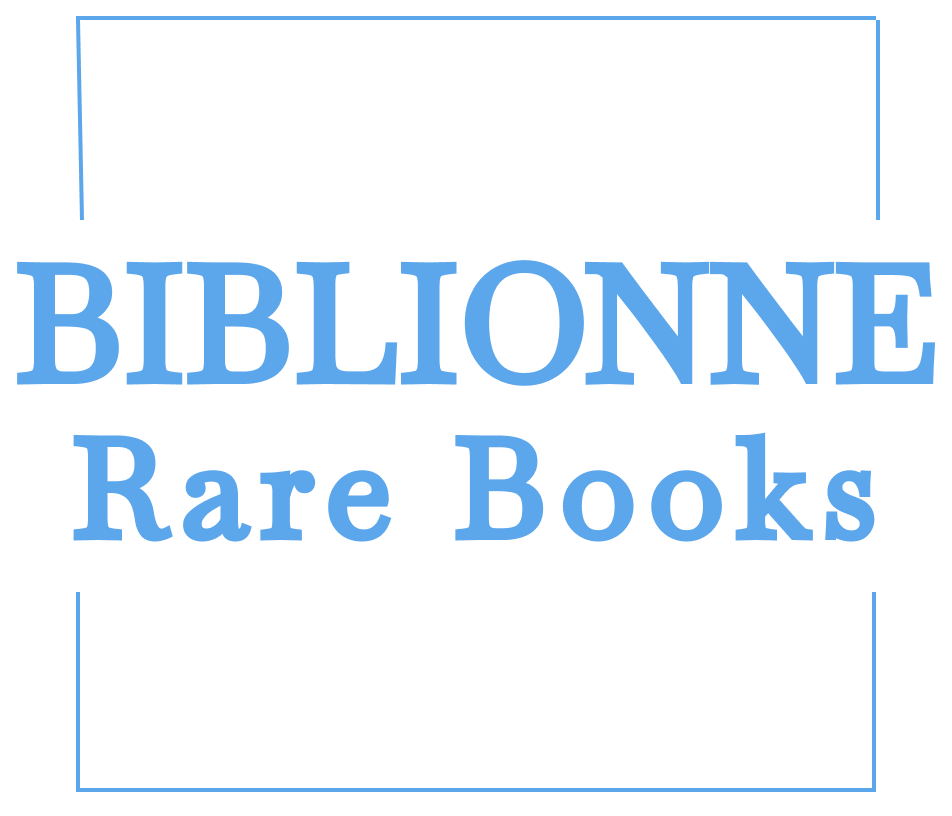Ine-Khon: Khanty Heroic Songs and Legends. Very rare edition of Khanty folklore.
Ine-Khon: Khanty Heroic Songs and Legends. Very rare edition of Khanty folklore.
Regular price
$2,015.00 USD
Regular price
Sale price
$2,015.00 USD
Unit price
per
Couldn't load pickup availability
[Ine-Khon: Khanty Heroic Songs and Legends]. Ine-Khon: Khanteiskie geroicheskie pesni i legendy.
Adapted by I. Elantsev.
Preface and comments by I. Panov.
Edited by E. Blinova.
Book design and illustrations by Iu. Ivanov.
[Sverdlovsk], Sverdlgiz, 1935.
12mo, front., 142, [2] pp., ill.
In original paper-covered boards and pictorial dj. Illustrated endpapers. With errata slip.
In good condition, dj restored and repaired, dj spine sun-tanned.
The only edition. A very rare and beautifully designed provincial edition. One of 5 000 copies printed.
During the Soviet period, the Khanty, an Ugric indigenous people, were among the few indigenous minorities in Siberia granted autonomy in the form of an okrug (autonomous district). However, in the 1930s, concerted efforts were made by the Soviet state to collectivize them. These policies involved relocating them to villages, banning all ethnic customs, and collectivizing hunting, fishing, and reindeer breeding. Children were removed from traditional homes to boarding schools where native language and cultural beliefs were forbidden. Revolts against the Soviet government, such as the Kazym rebellion (1931-1934) and the Mandalada (Yamal rebellion) in 1934 and 1943, took place. The uprisings were suppressed by the army, and more distant villages were bombed by the air forces.
Considering these events, the publication of this book in Sverdlovsk (nowadays Yekaterinburg) in a small print run is quite remarkable. It is also necessary to mention that an avid interest in folklore emerged in the 1930s after the First All-Union Congress of Soviet Writers in 1934, during which it was proclaimed that folklore is a part of literature.
This book includes the Khanty legend 'Ine-Khon', the story 'Two Brothers', the legend 'Two Bears', and the fairy tale 'Mouse'.
Unfortunately, we have no information about nor I.N. Elantsev neither I.S. Drukker, the persons who adapted and translated these songs and legends, but it is known that part of the texts was based on folklore collected by one of the first Soviet researchers of the Khanty, ethnographer Mikhail Shatilov, who was executed in 1937.
It is worth mentioning that the preface and comments were prepared by Ivan Panov (1899-1942), a Ural writer and the inaugural head of the Ural Writers' Organization.
The female editor of the book was Elizaveta Blinova (1883-after 1966?), a translator and folklorist, who is also known for her initiative and work on the book 'Pre-revolutionary Folklore in the Urals' (1936). It is also considered that it was Blinova who inspired Pavel Bazhov, best known for the collection of fairy tales 'The Malachite Box', to start working on his stories.
The book design was created by illustrator and poster artist Iurii Ivanov (1908-1970), who graduated from VKhUTEIN and the Moscow Polygraphic Institute. Later, he taught at the Sverdlovsk Art School.
The edition is very rare and remained obscured even from professionals. The publication is not mentioned in the main Soviet work about Ugric folklore published in Moscow in 1990.
OCLC locates only one copy of this edition: in the Ohio State University Library.
